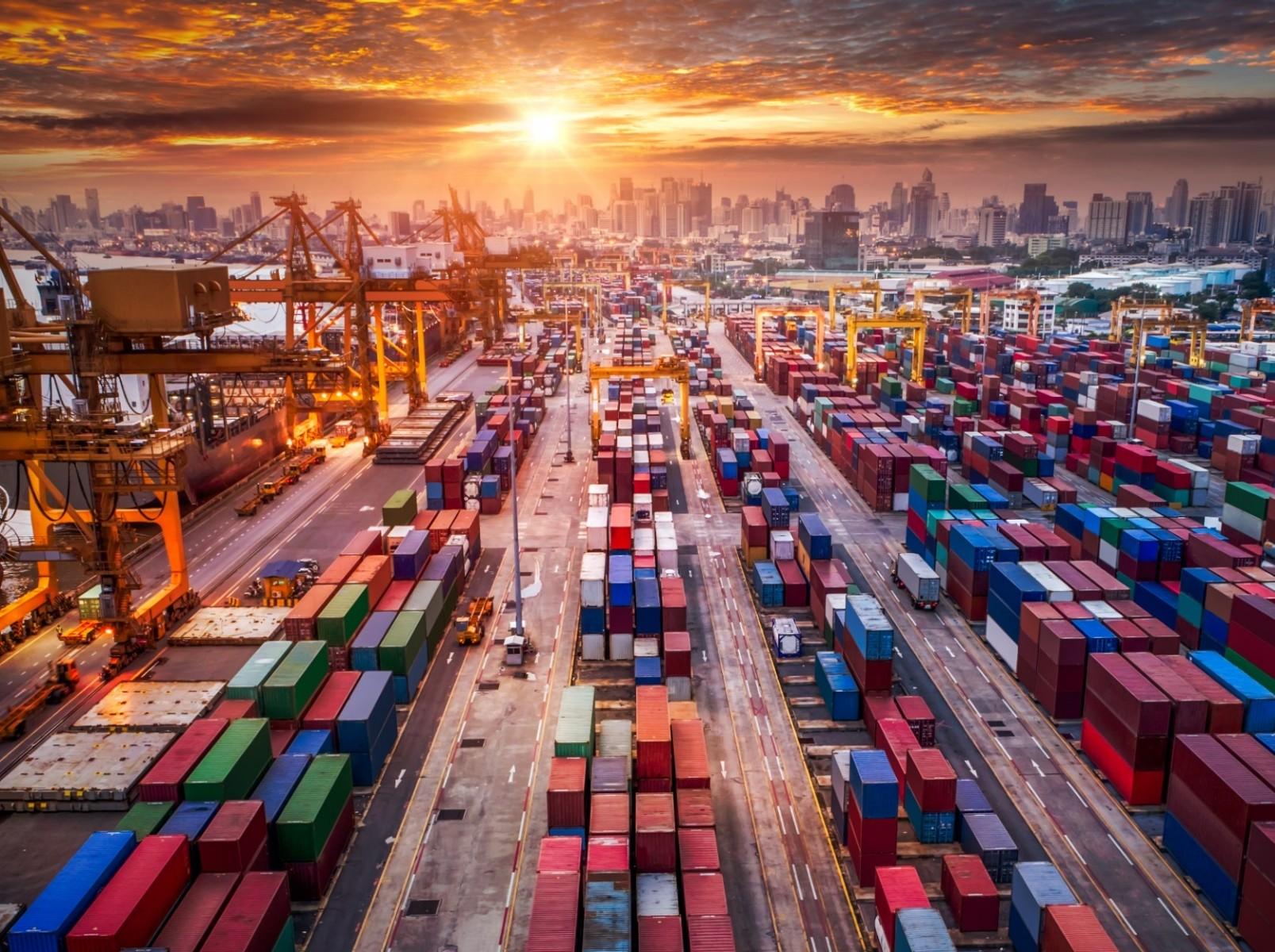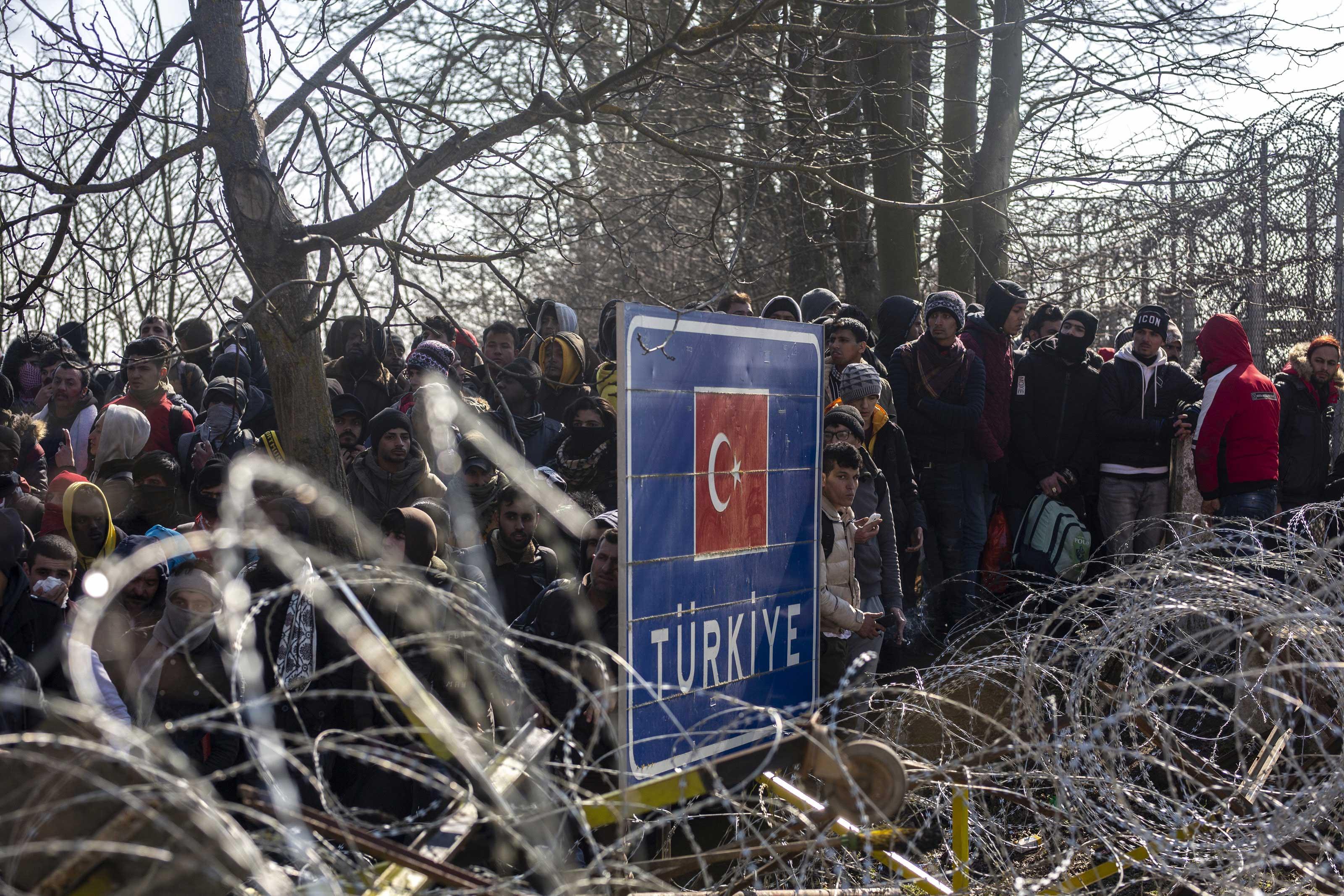Multi-Resilience for Times of Bundled Crises
archive


Five simultaneous active tropical cyclones in the Atlantic basin on September 14, 2020. From left: Hurricane Sally over the Gulf of Mexico, Hurricane Paulette over Bermuda, the remnants of Tropical Storm Rene, and Tropical Storms Teddy and Vicky. (Image source: NOAA)
Multi-Resilience for Times of Bundled Crises
Globalization is changing its face. Among the many contemporary developments, as sketched by Benedikter and Kofler,1 two dimensions are expected to impact the post-COVID world and the future of globalization in a critical way that will remain of particular importance for the years to come. Firstly, in light of “competing modernities” China has displaced the West in shaping the current debate on “globalization 2.0” particularly with its Belt and Road Initiative (BRI). Secondly, as (not only) the coronavirus pandemic has shown, increasing global interconnection leads to further exposure of the international community to multiple threats due to volatility, uncertainty, complexity, and ambiguity (VUCA). Against this background, we should reflect on the extent to which the new concept of multi-resilience might present an appealing incentive to furthering international cooperation and “re-framing” globalization.
The Belt and Road Initiative (BRI): China’s discourse on “Globalization 2.0”
China’s Belt and Road Initiative (BRI) involves infrastructure development and investments in 70-150 countries worldwide2 and may be considered as one of the most influential concepts shaping today’s discourse on “globalization 2.0.” While the rising superpower provides what for many could be an appealing growth-related vision, Western countries have widely failed to develop appealing alternatives or complementary approaches of innovative multilateral cooperation.3
The flexible but also competitive character of the BRI is highlighted by how it complements the rule-based Eurocentric model of international order, as well as its existing institutions and ongoing projects. As the BRI cooperation takes place in simultaneous parallel arrangements, including multilateral mechanisms and bilateral relations, it is not a problem for its leaders and proponents if the arrangements and affiliations of actors overlap. Take for example the case of Poland: a member of the EU, of China’s 16+1 Initiative, and of the Asian Infrastructure Investment Bank (AIIB), all alongside growing bilateral ties with China and the BRI. Thus, in China’s view, actors do not need to decide between different mechanisms, political systems (such as authoritarian, dictatorial or democratic systems) or interests. The underlying assumption is that win-win cooperation does not underlie the condition of parity but that it can also create win-win-situations even when the economic shares are unequally distributed or asymmetric.4
Yet critics hold that China clearly represents the core of the BRI, increasingly binding the involved countries to its own interests which due to its size must always prevail. Thus, in sum, the BRI may be regarded as a proactive Chinese response to the question of how international politics could be (re-)organized in the framework of an increasingly complex and multipolar future.
Multi-resilience: Responding to current and future global threats
Besides China’s increasing dominance in the current discourse on globalization 2.0, recent years have shown increasing vulnerability of the international community to multiple global risks due to increasing inter-connectedness. As a consequence, the concept of “resilient societies”—the ability of a society to withstand crises—has been popularized since the beginning of this century.
To date, resilience studies and political science have paid most attention to resilience in the face of natural disasters. However, today’s international community faces multiple global challenges like refugee crises, economic crises, cybersecurity threats, and particularly climate change with its many side-effects like natural disasters, bad weather events, floods, and so on.5 Although authoritarian regimes in Asia appear to have gained a reputation boost due to their relatively successful performance in managing the coronavirus pandemic, no country or system has developed an adequate framework for responding to multiple simultaneous threats.

Freight yard node of China's Eurasian Belt and Road Initiative. (Source: Getty Images)
Given the complex and multi-dimensional nature of today’s global challenges and threats, the discourse on resilient societies has been expanded towards “multi-resilience.” Multi-resilience considers today’s challenges to the international community as “bundles of threats.” In this regard, multi-resilience means the ability of a social system to withstand various types of crises simultaneously.6 The concept aims at developing “systemic robustness” of societies, including enhanced collective intelligence and problem-solving capacity or an increased ability to respond to completely different crisis contexts through effective communication and multi-level governance across society-sectors, including the public and private sectors, the scientific community, and civil society.7
Multi-resilience: A Western contribution to Re-globalization discourse?
These systemic orientations of multi-resilience can be applied to any crisis. They particularly require effective communication, not only within but also between nation states. But do the concepts of resilience and multi-resilience foster global cooperation? This question can be answered by “yes” and “no.” It depends on whether (multi-)resilience is applied to the national context or international context.
The COVID-19 crisis showed various attempts of nations to increase their resiliency at the cost of global cooperation. These included, for example, unilateral actions at the beginning of the pandemic by temporarily closing borders in order to prevent further spread, or rethinking worldwide supply problems in the face of missing or diverted deliveries of urgently needed medical equipment.8 The crisis has not only fuelled calls for more domestic production of important goods, but also for decreasing dependence on international suppliers.9 Striving for national (multi-)resiliency can also increase an atmosphere of international competition for resources, as shown on many occasions by former U.S. president’s Donald Trump’s “America First”-policy. Thus, from a national perspective the concept of resiliency could counteract global cooperation. However, from another point of view it could promote the discourse of “revisioning” through a fundamental reconsideration of the pros and cons of globalization. From a global perspective, the discourse on promoting multi-resiliency of the international community remains relevant as well, since multiple global risks cannot be solved by nation-states alone.
[M]ulti-resilience means the ability of a social system to withstand various types of crises simultaneously.
Given multiple contemporary challenges, the international community requires effective inter-disciplinary global cooperation and decision-making mechanisms on the local, national, and supra-national levels in order to enhance its ability to react to unprecedented crises more quickly. In an increasingly multipolar, inter-connected, and thus vulnerable world, the EU—still regarded as an influential soft power—could promote international resilience networks to jointly anticipate and prepare for common global challenges in the future. Similarly to China’s BRI, this can happen on the basis of both flexibly overlapping bilateral and multilateral partnerships. Concretely, the EU could actively promote national and global multi-resiliency in at least four dimensions:
Governance: Any form of multi-resiliency needs to include multi-level governance integrating central and decentralized decision-making. To date, no fully developed forms of multi-level governance exist at the international level. Worldwide, the EU has the most developed system of supra-national integration, including sanctioning mechanisms on the federal level together with local and national independence.

Refugees gather along the Turkey-Greece border early in the COVID-19 crisis. (Image source: Getty Images)
Although it has not (yet) developed to the level of a “United States of Europe,” the EU can serve as an inspiration for global multi-level-governance integrating effective decision-making on all levels. Fostering global multi-level-governance refers to Benedikter’s concept of Re-globalization: a pushing further of both, global political integration on the international level while strengthening decentralized local self-sufficiency.
Collective intelligence is not only necessary to systematically evaluate past experiences and develop best practices. Above all it is needed to develop, test, and modify innovative solutions in completely new, unprecedented crisis situations. In this way cross-sectoral and cross-disciplinary knowledge exchange and integration could be implemented systematically in both national and transnational constellations, and could be an essential part of trust-building EU diplomacy.
Psychological resilience can be learned, and could be integrated more systematically into national educational policies. At the international level, resilience training and knowledge exchange about successful resilience practices could promote a constructive context for international cooperation. This could manifest in various initiatives and programs, particularly in the education sector.
Collective cohesion is essential for dealing with future global challenges. Some examples of international solidarity could be found during the COVID-19 crisis. Solidarity initiatives prove also to be an effective approach for trust-building and forming strategic alliances.
Conclusion
Multi-resilience could therefore significantly complement Europe’s lack of an appealing vision of “Globalization 2.0” and contribute to shaping related discourses. It provides an opportunity to actively 're-frame' globalization: beyond merely a process of inter-connection and military and economic cooperation, toward joint knowledge exchange and crisis anticipation and response. The EU could play a leading role here. Against this background, further important steps for EU countries could be, firstly, to reflect, design, and communicate a vision of multi-resilience in the context of re-globalization and, secondly, to actively initiate cross-national mechanisms of global crisis coordination on the formal level of existing supranational institutions (i.e. at EU and UN level). This could be backed, finally, by bilateral preliminary talks with other states on the informal level.
1. https://www.21global.ucsb.edu/global-e/august-2019/globalization-s-current-transition-phase-5-r-s
2. https://www.gtai.de/gtai-en
3. Godehardt, N. / Kohlenberg, P. J. (2017): Die neue Seidenstrasse: Wie China internationale Diskursmacht erlangt. In: SWP, https://www.swp-berlin.org/kurz-gesagt/die-neue-seidenstrasse-wie-china-internationale-diskursmacht-erlangt/
4. Godehardt, N. (2016): „No End of History: A Chinese Alternative Concept of International Order?“ SWP Research Paper 2016/RP 02, January 2016, 24 Pages https://www.swp-berlin.org/en/publication/no-end-of-history/
5. https://www.weforum.org/reports/the-global-risks-report-2020
6. Fathi, K. 2019: Resilienz im Spannungsfeld zwischen Entwicklung und Nachhaltigkeit – Anforderungen an gesellschaftliche Zukunftssicherung im 21. Jahrhundert. Springer
7. Ibid. For a detailed description of the dimensions of multi-resilience. Concerning multi-resilience in the corona crisis, you may also see https://blogs.eurac.edu/covid-19/gesellschaftliche-resilienz-fathi/
8. https://www.spiegel.de/politik/deutschland/coronavirus-in-deutschland-sechs-millionen-schutzmasken-spurlos-verschwunden-a-b3ba8e1e-2a79-438a-9d85-dd52f53e428e
9. https://www.staufen.ag/de/unternehmen/news-events/news/newsdetail/2020/05/lehren-aus-covid-19-pandemie-55-prozent-der-industrie-unternehmen-suchen-nach-neuen-lieferanten-m/



